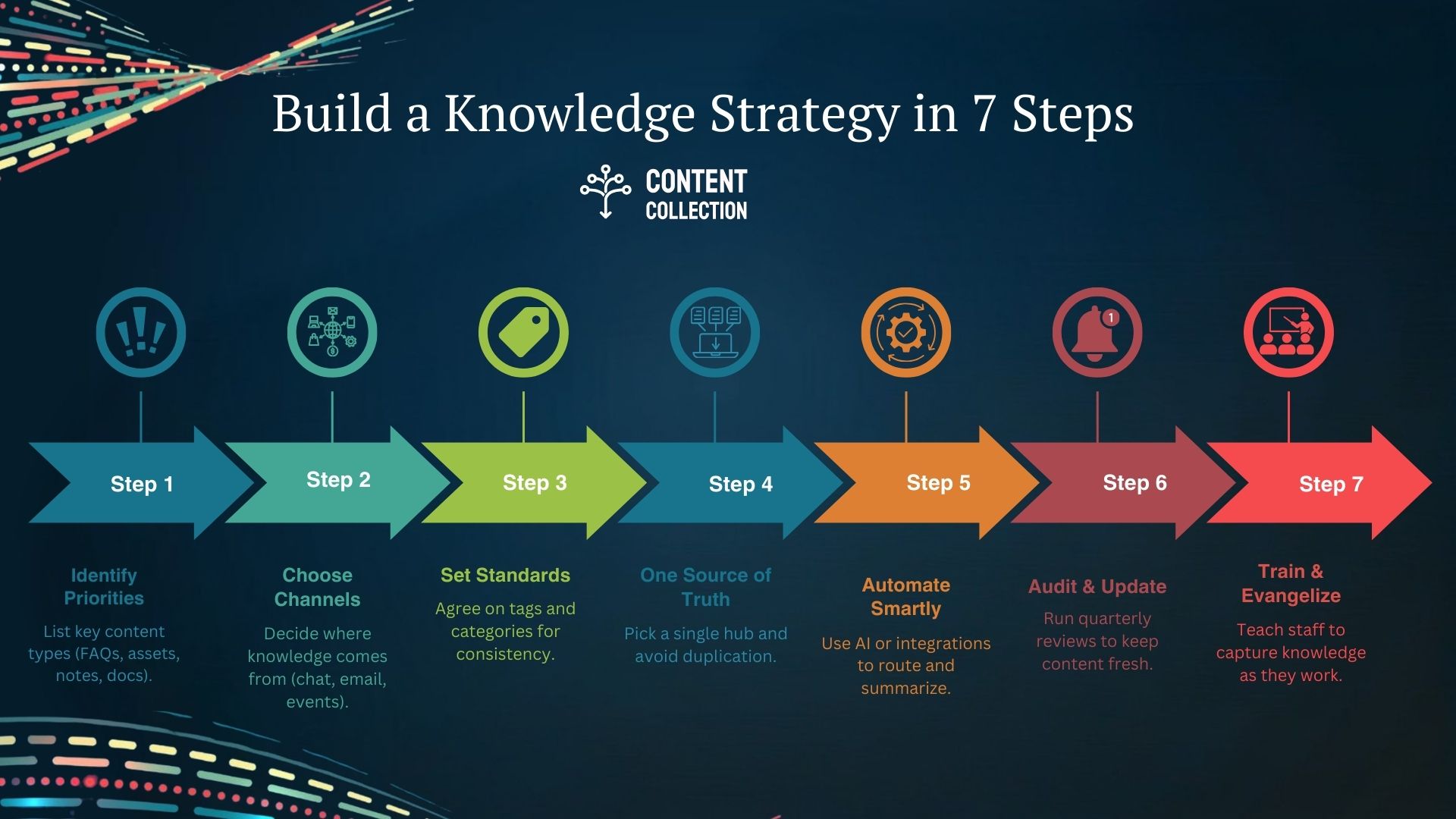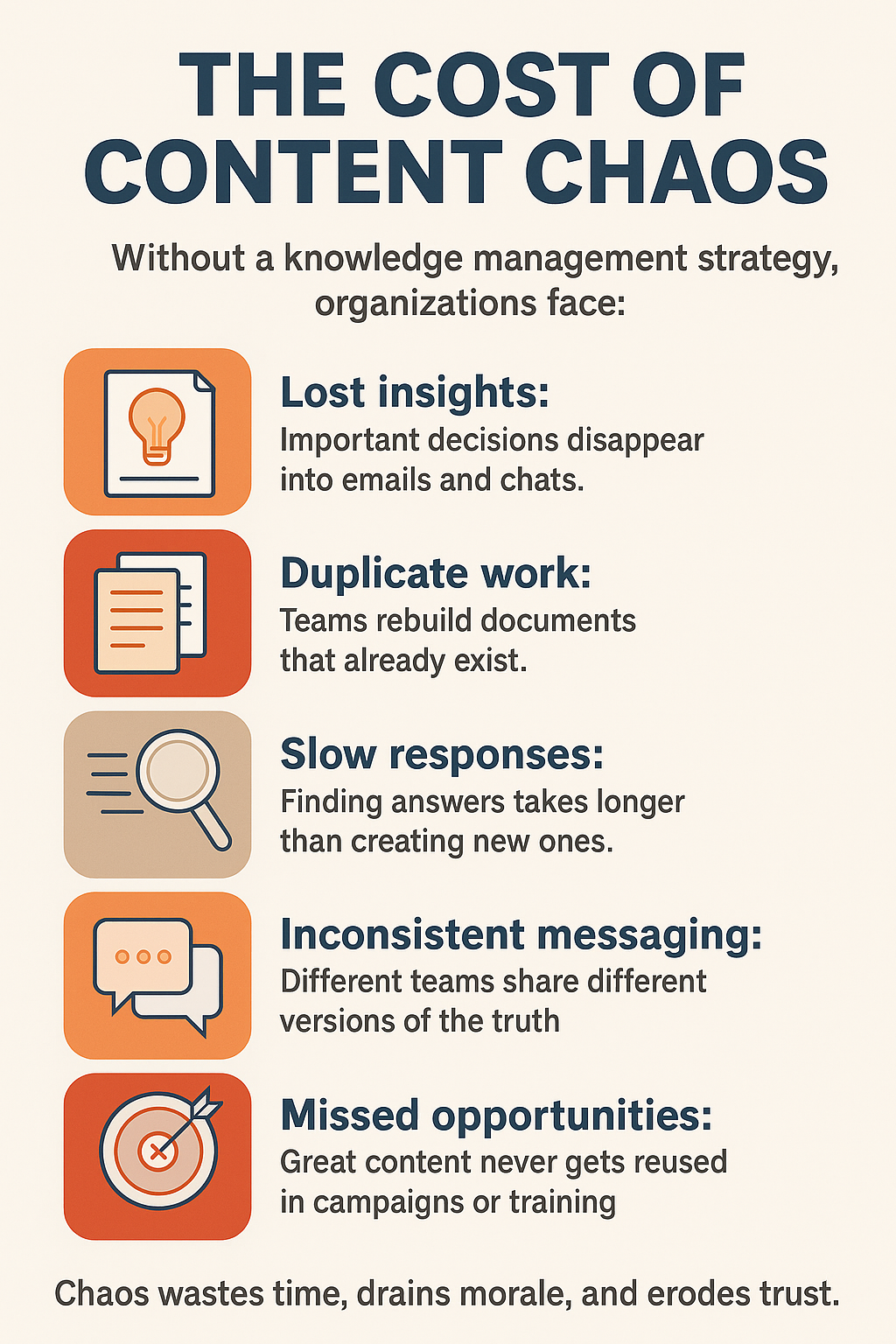Why the Next Decade Belongs to Structured Knowledge

We live in an age of incredible content creation. Every day, more articles, videos, podcasts, and social posts flood our feeds. Businesses are churning out more information than ever before, driven by an eager desire to connect, inform, and grow. But as this tide of content rises, a new challenge emerges: it's not just about producing more; it's about making sense of what you already have.
If your team feels overwhelmed by scattered information, if finding that crucial piece of content feels like a treasure hunt, or if you're constantly reinventing the wheel because you can't easily access past work, you're not alone. It's a common struggle that can feel daunting. The organizations that truly thrive in the coming decade will be those that master the art of structured knowledge. This isn't just about tidying up; it's about building a fundamental advantage. It's about shifting from a focus on simply producing content to intelligently retrieving and repurposing it.
Why Knowledge Management Matters Now
Knowledge management is the discipline of capturing, organizing, sharing, and reusing knowledge so that the right people get the right content at the right time. A knowledge management strategy is the plan for how an organization will make this happen.
Today, we are drowning in content. Emails, Slack threads, meeting notes, campaign briefs, and customer interactions pile up daily. Without a clear strategy, teams waste time searching, duplicate work, and lose insights. Knowledge management is no longer optional — it is essential for efficiency, clarity, and trust.
What Is a Knowledge Management Strategy?
A knowledge management strategy is a structured plan for how an organization gathers, organizes, shares knowledge, and reuses its knowledge. The goal is simple: get the right content to the right people at the right time. Done well, it prevents wasted effort, speeds up responses, and builds a shared memory that strengthens over time.
This is more than storing files in a shared drive. It’s about building a system that turns daily conversations, documents, and insights into structured knowledge—a resource the whole team can trust.

Why Content Chaos Holds Organizations Back
Think about how much work goes into a single piece of content: a support article, a campaign brief, or a training deck. Now multiply that by hundreds. Without a knowledge management strategy, teams face:
- Lost Insights: Brilliant ideas and crucial information get buried in chat threads, obscure folders, or forgotten emails.
- Duplicate Work: Teams unknowingly recreate content that already exists, wasting precious time and resources. Slow
- Responses: Finding the right answer to a customer's question or a colleague's query becomes a slow, frustrating process.
- Inconsistent Messaging: Without a single source of truth, different parts of an organization might share conflicting or outdated information.
- Missed Opportunities: The inability to quickly find and repurpose existing assets means new projects start from scratch, slowing down innovation and agility.
The true cost of this content chaos isn't just wasted time; it's lost opportunities, frustrated teams, and a hindered ability to scale and adapt. Our digital tools were meant to empower us, but often, the sheer volume of unstructured data makes us feel less in control, not more.
Core Elements of a Strong Knowledge Management Strategy
From our research into content collection and real-world use cases, five key elements make a strategy work:
- Clear Definition of Knowledge
Decide what counts as “knowledge.” Is it only final docs, or do conversations, quotes, and campaign materials qualify? - Intelligent Organization
Use tagging, categories, and AI-assisted grouping to make information discoverable. Content should connect across projects and people, not live in silos. - Reusable Components
Break content into blocks that can be pulled into new formats—like taking a donor quote for both a slide deck and a press release. - Automated Workflows
Systems should handle updates, routing, and summaries so teams spend less time on manual upkeep. - Shared Access and Memory
Ensure knowledge doesn’t vanish with staff turnover. Spaces or hubs should outlive individuals.
Examples of Knowledge Management in Action
1. Army Answers (Community Support)
The U.S. Army uses a Knowledge Base Software to centralize Q&A across websites, forums, and social media. Results: faster response times, consistent answers, and reduced staff workload.
Actionable Steps to Build Your Knowledge Management Strategy
Use this checklist as a starting point:
- Identify Knowledge Priorities – List the content types that matter most: FAQs, campaign assets, donor notes, training docs.
- Choose Collection Channels – Decide where knowledge comes from: chat platforms, email, forums, events.
- Set Tagging & Categorization Standards – Agree on tags or labels (projects, audiences, content types).
- Establish a Single Source of Truth – Pick one platform (or hub) where knowledge lives. Avoid duplication across tools.
- Automate Where Possible – Use AI or integrations to summarize, group, and route content automatically.
- Audit & Update Regularly – Run quarterly content audits. Archive what’s outdated, refresh what’s still useful.
- Train & Evangelize – Teach staff to contribute knowledge as part of their workflow, not as an extra task.
Why a Knowledge Management Strategy Matters Now
- Efficiency and Speed: Teams answer questions and start projects faster.
- Consistency and Trust: Messaging stays aligned across departments.
- Innovation and Agility: Content gets reused and built on, not lost.
- Human Impact: People spend less time searching and more time creating.
- AI Readiness: Structured content is the fuel for smarter, future-facing tools.
The Future of Knowledge Management Strategy
The next decade of knowledge management will be shaped by:
- AI-powered discovery: Intelligent tagging, summarization, and retrieval.
- Ops elevation: Project managers and knowledge leads seen as core strategists.
- Content reuse at scale: Assets automatically repurposed across channels.
- Predictive analytics: Knowledge bases fueling trend forecasts and decision-making.
- Human focus: Less time searching, more time problem-solving.
Organizations that invest in structured knowledge will thrive. Those that treat it as an afterthought will struggle to keep up.
The future won’t reward organizations that simply produce more content. It will reward those that organize knowledge as a strategic asset.
